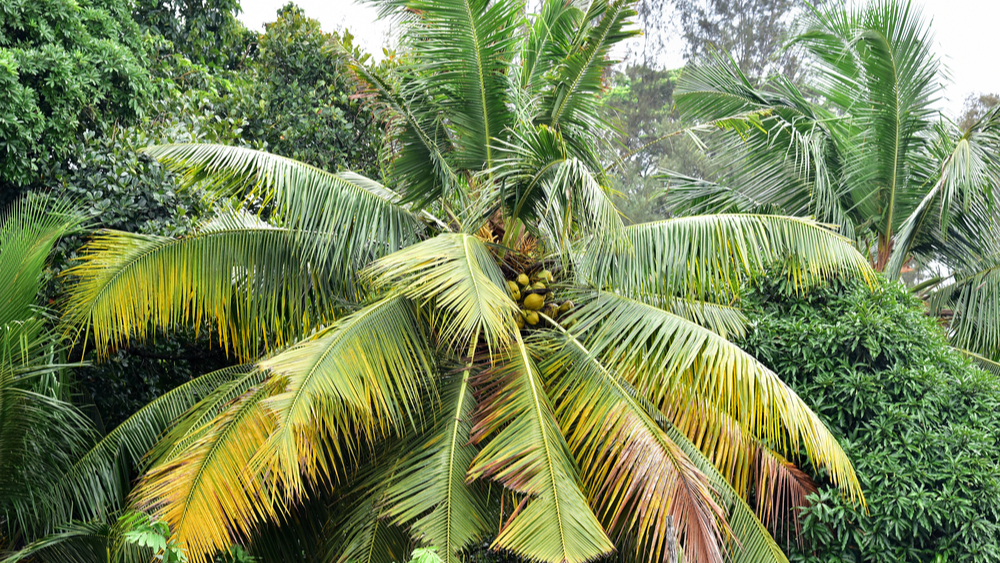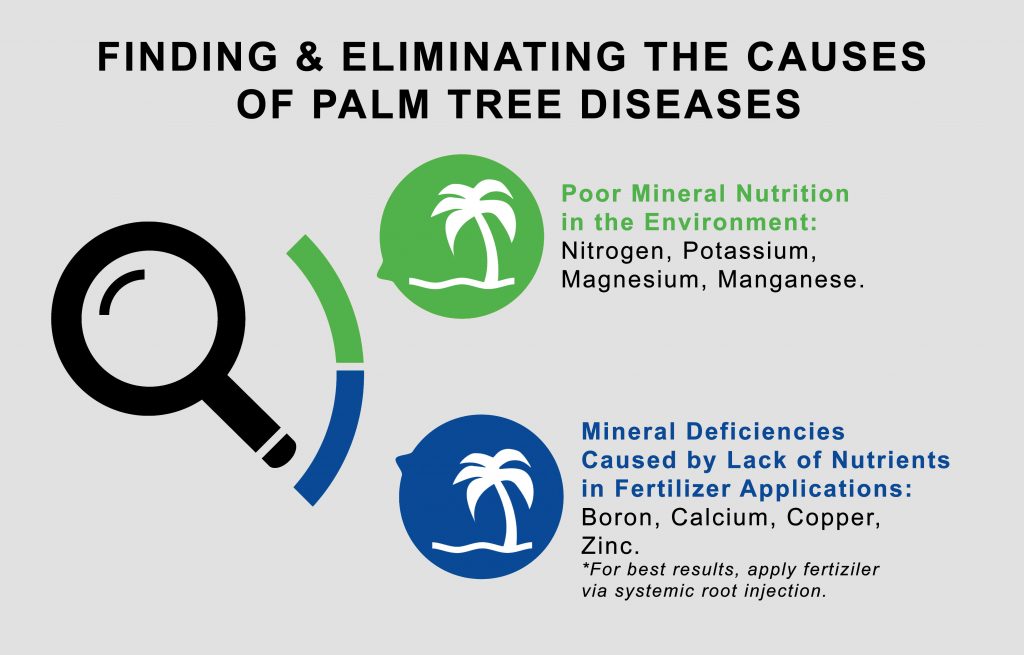
What would our state be like without its magnificent palm trees gently bobbing in Florida’s warm ocean breezes? That’s a scenario that residents and visitors find too horrible to imagine. Yet Florida’s palm trees, one of our state’s most iconic symbols, are under attack by a range of diseases, many of which are incurable. One of the most serious threats is posed by lethal bronzing disease, which arrived in Florida from Jamaica about 15 years ago.
Combatting this and other palm tree diseases in Florida starts with a comprehensive tree maintenance program that combines hydration, drainage, monitoring for damaging and disease-carrying insects, and regular inspections to spot signs of disease. Preserving the palm trees growing around your home or business requires early detection of potential problems. Here’s a rundown of the most common palm tree diseases in Florida and their telltale symptoms.
Palm Tree Diseases Florida Residents Encounter Most Often
Since most of the diseases that strike the palm trees of South Florida are incurable, the most effective protection for your trees is preventing the diseases from taking hold. Disease pathogens that infect palm trees need to find the right palm species and opportunistic conditions. Therefore, if you take away the opportunity to infect due to some weakness or improper care, you can substantially reduce the risk of disease.
- The disease that’s uppermost in the minds of most Florida residents is lethal bronzing disease (LBD), which is also known as Texas Phoenix Palm Decline. LBD strikes 19 species of palm trees and is caused by an insect called haplaxius crudus, or American palm cixiid, which spreads bacteria named phytoplasmas.
- The same insect is responsible for infecting palm trees with lethal yellowing disease (LYD) which, like LBD, is lethal to coconut palms, date palms, and other varieties. LYD has significantly reduced the number of tall coconut palms in many parts of southern Florida. While there are still sporadic outbreaks of LYD in the area, the disease is less common than it was in recent years.
- Leaf spots are usually small brown circles or elongated patches on the palm leaves. They are often caused by fungi and in most cases won’t kill the tree. If the damage they cause is severe, however, a fungicide application by a professional service may be necessary.
- False smut is also called Graphiola leaf spot because it is caused by graphiola phoenicis fungi. It affects Canary Island date palms and other palms in the Aceraceae family. The disease can often be prevented by improving air circulation around the leaves and preventing irrigation from striking the palm fronds.
- Bud rot causes the palm’s spear leaf and the next youngest leaf to wilt and become discolored. When the palm canopy is above eye level, the first indications of bud root may be a lack of new leaves and an open-topped crown. The most common bud rot pathogens in Florida are Phytophthora palmivora and Thielaviopsis paradoxa.
Other diseases that affect palm trees in Florida include Calonectria, a fungus that affects parlor palms, cat palms, coconut palms, and golden cane or areca palms. And Fusarium wilt, a fungus that strikes Canary Island date palms, Queen palms, and Mexican fan palms. In addition, the Pestalotia and Pestalotiopsis fungi infect many types of Florida palm trees, including the Pygmy date palm, where it can lead to fatal bud rot.

Finding and Eliminating the Causes of Palm Tree Diseases
Many of the diseases that damage and kill palm trees in Florida are the result of poor mineral nutrition in their environment, including nitrogen, potassium, magnesium, and manganese. For example, potassium deficiencies are common for Florida palm trees because potassium leaches quickly out of sandy soil. Therefore, controlled-release potassium fertilizers such as sulfur-coated potassium sulfate are more effective than water-soluble applications.
Mineral deficiencies may also be caused by a lack of nutrients in fertilizer applications, such as boron, calcium, copper, and zinc. These problems can be addressed by applying fertilizer via systemic root injection, which avoids runoff and spillage onto impermeable surfaces. This approach is more effective than traditional foliar sprays used to kill the insects that may cause palm tree diseases because it targets only the bugs that pose a threat rather than killing all insects, some of which are beneficial to the tree’s health.
Getting Started With Nozzle Nolen
The palm trees that grace your home and business are an irreplaceable asset for you, your neighbors, and your community. Protecting them from the palm tree diseases Florida is prone to ensures that these icons of the Sunshine State will be preserved for generations to come. With the help of the experts at Nozzle Nolen, you can be confident that your palm trees are in good hands.
Nozzle Nolen has provided expert pest control and palm tree care service to Florida businesses and residents for over 70 years. If you suspect one of your palms may need some care, or if you would just like more information on palm tree diseases in Florida, call us at 800.226.6536 or Contact Us. We look forward to serving you.




